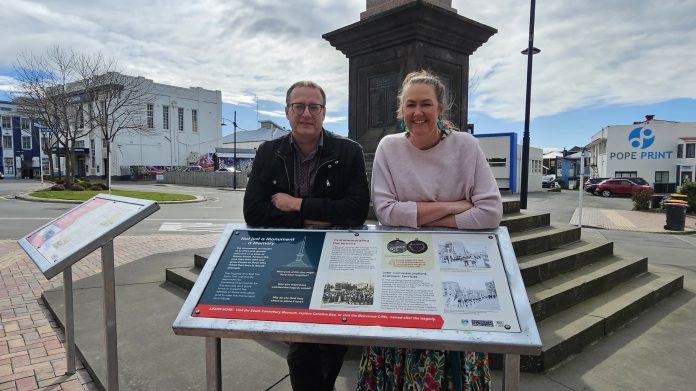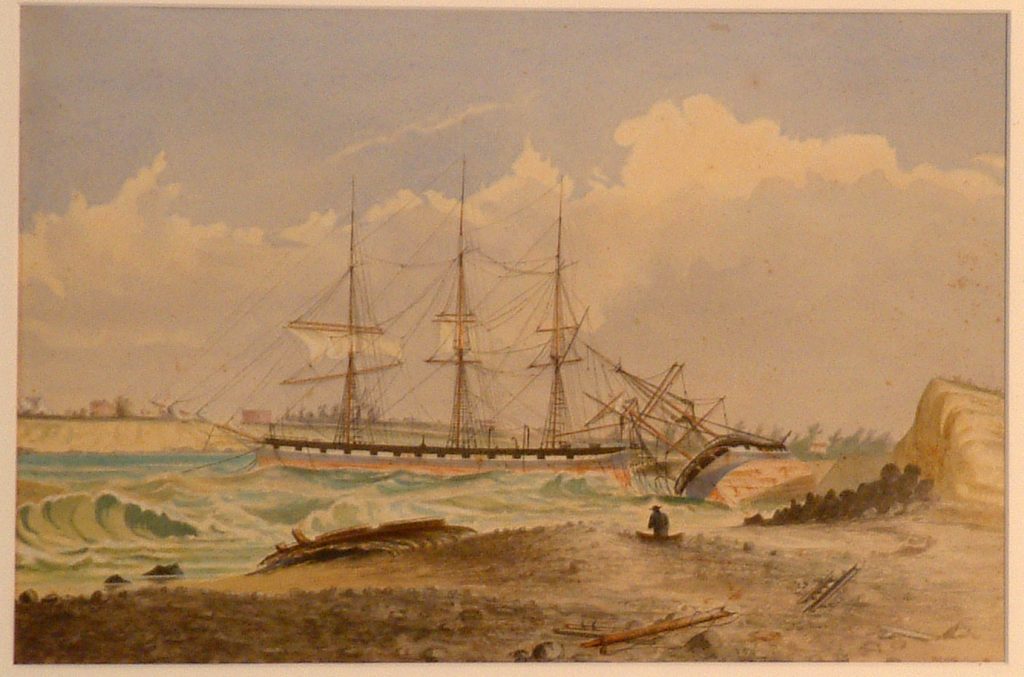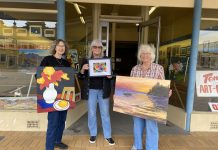
The story of one of Timaru’s darkest days has once again been preserved in the form of a new pair of information panels at the The Seafarers monument.
The new panels were installed last week to replace and update the old panels which were put up 25 years ago and had been steadily decaying.
South Canterbury Museum documentary history curator Tony Rippin compiled the information for the new panels and said they differed a bit from what had been up previously.
‘‘I was quite keen on the idea of these lower signs allowing you to stand here, and actually reflect directly at the memorial. ‘‘Whereas with the previous signs, you were standing with the memorial at your back to read them. They were also quite big and tall, and blocked lines of sight.
‘‘The previous signs talked a lot about the development of the harbour, and shipwrecks. These ones talk very briefly about the development of the harbour, and obviously shipwrecks, specifically the Benvenue and City of Perth wreck in 1882, which is known as Black Sunday.
‘‘Most people who know something about local history know about Black Sunday, but we also wanted to bring it up to date. So, talking about the commemorations of those wrecks, which happened for many decades.
‘‘It’s in nice bite-sized chunks of information now and it’s also a bit of a call to action to encourage people to go and explore other sites or come to the museum to learn more.’’

Work on the project began in May when the Timaru District Council parks and recreation maintenance team approached the museum about replacing the existing information panels.
Mr Rippin said an important part of the project had been engaging with the community.
‘‘We got in touch with some people who were involved, just to say ‘hey, look, we’re doing this, and we just want to make sure that we’re not going to do something that’s going to cause problems’.
‘‘We just took a bit of time to have those conversations, speak to representatives, and give them a chance to talk to their communities and they were all on board.
‘‘There was some great teamwork involved.’’
The panels were designed by arts and heritage volunteer advocate and Wuhoo Timaru co-founder Roselyn Fauth.
They had been designed to connect, reflect and match with what had been done at CPlay and with the art history signs, and what would be done with the Alexandra Lifeboat project in the future.
‘‘There’ll be some continuity now with museum and gallery on how we do our place-based storytelling.
‘‘It also makes it way easier for council and volunteers when we need to update signage, it’s a standard set now. The new frames are now also the same as the art history frames.
‘‘As a domestic tourism device, and then also for sharing information with our visitors, these two signs are now building on from what the art gallery has done and I’m quite proud to be a part of that.’’
She believed it was important to make sure people could see themselves in the past.
‘‘They can connect to those stories, and I think that’s important to me because when you know where you come from, you know who you are, and when you know where you are, you make better choices.
‘‘A lot of people say ‘we spend too long looking in the past’, and I think we don’t actually spend enough time thinking ‘you made a mistake, let’s not do that again’ or ‘that was great, we need to do that again’.
‘‘That’s been my motivation behind CPlay and now trying to support Tony and the museum. I’m hoping this will now be a catalyst for looking out wider and saying ‘how do we share those stories? Is it more art? Is it plaques? Or is it more signs?’.’’




